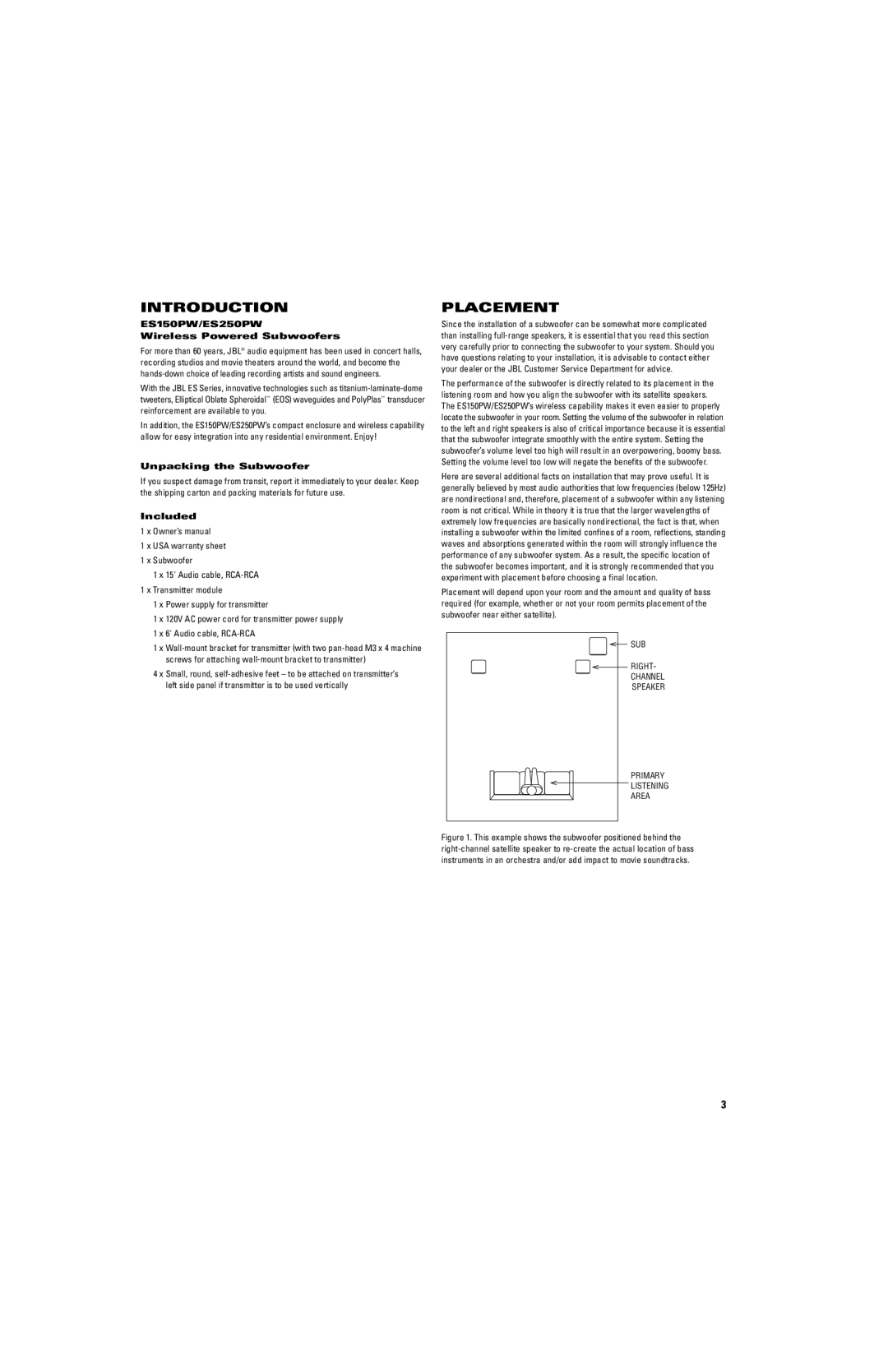ES250PW, ES150PW specifications
The JBL ES150PW and ES250PW are powerful subwoofers designed to elevate the home audio experience. Renowned for their exceptional sound quality and deep bass response, these models combine innovative technologies with sleek design to deliver an immersive listening experience for music lovers and home theater enthusiasts alike.The JBL ES150PW features a 150-watt built-in amplifier, which provides robust power to drive the 12-inch PolyPlas™ woofer. This woofer is engineered to produce clean, accurate bass at any volume level. Its frequency response ranges from 28Hz to 150Hz, ensuring that users experience the full spectrum of low-frequency sounds. The subwoofer's front-firing design allows it to deliver impressive audio performance without compromising on aesthetics, making it an attractive addition to any room.
On the other hand, the JBL ES250PW goes a step further with a 250-watt built-in amplifier and a larger 12-inch driver, which enhances its ability to reproduce bass with incredible depth and impact. This model also features a sophisticated ported enclosure design that optimizes airflow and minimizes distortion, resulting in a cleaner, more powerful sound. The ES250PW’s frequency response is similarly impressive, extending down to 24Hz and bringing out the deepest bass notes that resonate in both music and movie soundtracks.
Both subwoofers come equipped with advanced features such as a variable low-pass crossover and phase control, which allow users to fine-tune their audio setup according to their preferences and room acoustics. These controls enable seamless integration with other speakers, creating a balanced soundstage while enhancing the overall listening experience.
The JBL ES series subwoofers are designed for versatility as well. They can be easily connected to a variety of audio systems, whether it’s a stereo setup or a full surround sound configuration. Their sturdy construction and elegant finish ensure durability, and they are available in sleek black vinyl, allowing them to blend seamlessly into any decor.
In summary, the JBL ES150PW and ES250PW subwoofers are remarkable audio components that deliver superior performance, making them ideal choices for anyone looking to enhance their home audio experience with deep, powerful bass and clear sound reproduction.

